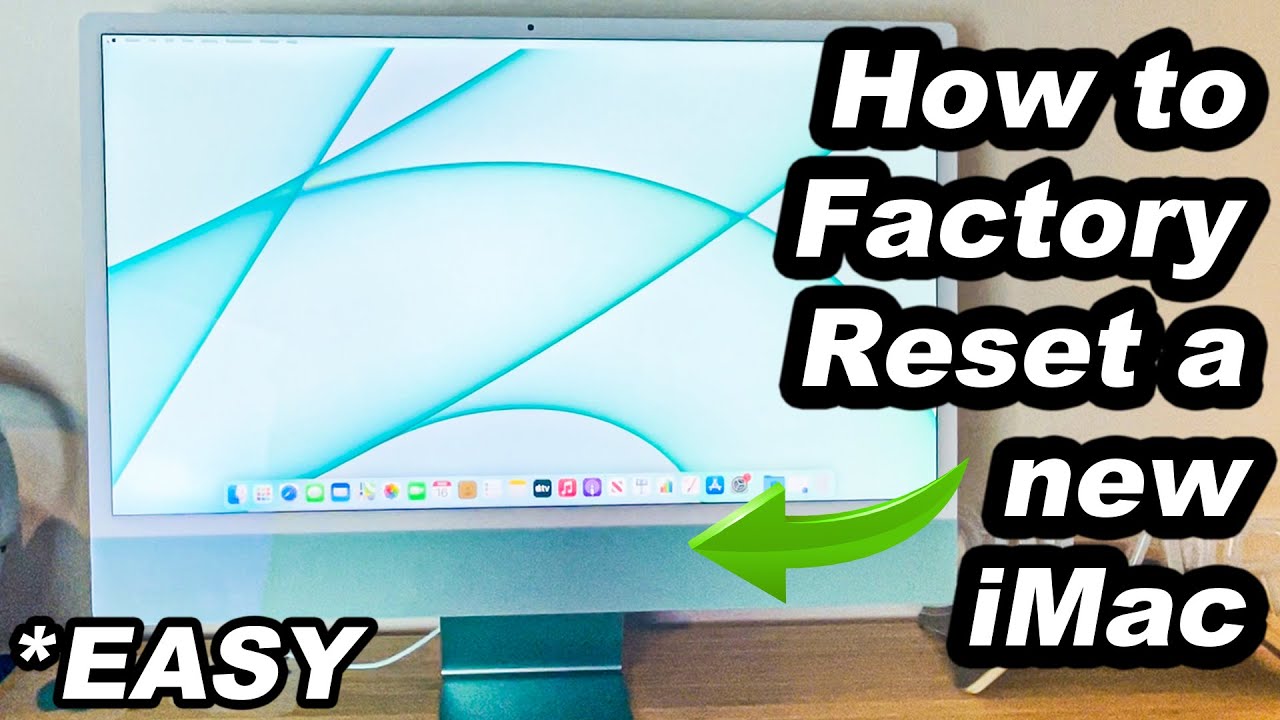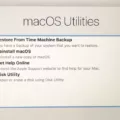Resetting a Mac is a great way to start fresh and get your computer back to its original settings. Whether you need to reset your Mac because of a software issue or just want to erase all data from the hard drive, resetting it is an easy process that can be done in a few simple steps.
First, you need to enter the Recovery Mode on your Mac. To do this, shut down your Mac and then press and hold Command-R while restarting it. This will open the Recovery app window, where you can select Disk Utility or Reinstall macOS.
If you choose Disk Utility, you will be able to select the volume you want to erase from the sidebar and then click Erase in the toolbar. This will begin the process of erasing all data from your Mac’s hard drive. Once this is finished, your Mac will be restored to its factory settings.
Alternatively, if you choose Reinstall macOS in the Recovery Mode window, this will reinstall a fresh copy of macOS onto your machine, wiping out any existing data and restoring it back to its original settings. You may need an internet connection for this option as some files may need to be downloaded during installation.
Once either process is complete, your Mac will be restored back to its factory settings. However, please note that any personal files or documents stored on your computer prior to resetting it will be permanently deleted as part of this process and cannot be recovered. Make sure that you have backed up any important files before resetting your Mac!

Forcing a Mac to Reset
To force your Mac to reset, you can use the Recovery Mode. To access Recovery Mode, firt restart your Mac. Immediately after you hear the startup sound, press and hold Command-R on your keyboard. This will open the Recovery app window. From there, select Disk Utility and click Continue. In Disk Utility, select the volume you want to erase in the sidebar and then click Erase in the toolbar. This will force your Mac to reset and erase all data from that volume.
Resetting an iMac to Factory Settings Without a Password
To reset your iMac to factory settings without a password, you need to enter Recovery Mode first. To do this, restart your Mac and press and hold the Command+R keys simultaneously until the Apple Logo appears on the screen. Once you’re in Recovery Mode, you can use the Disk Utility or Reinstall macOS option to erase data on your Mac. If you choose the Disk Utility option, select your hard drive from the list of drives and click on Erase. After that, click on Reinstall macOS and follow the instructions to reinstall a clean version of macOS on your iMac.
Resetting a Mac to Factory Settings When It Won’t Turn On
If your Mac won’t start up properly, you can reset it back to its factory settings. To do this, enter your Mac’s Recovery mode by holding down the Command and R keys while it starts up. Once you’re in the Recovery menu, select Disk Utility from the list of options. In Disk Utility, find your system disk and select it. Then click Erase and wait for it to finish. After that, quit Disk Utility and select Reinstall macOS. Follow the on-screen instructions to accept the license agreement and reinstall macOS back to its factory settings.
Resetting a Mac to Factory Settings When Unable to Log In
If you can’t log in to your Mac, you can still reset it to factory settings using macOS Recovery. To do this, first shut down your Mac and then start it up whie holding down Command-R on the keyboard. This will boot into macOS Recovery, where you’ll be asked to select an admin user. Once selected, choose the ‘Erase Mac’ option from the Recovery Assistant menu in the menu bar. In the Erase Mac window, click ‘Erase Mac’ and then confirm by clicking ‘Erase Mac’ again. This will completely reset your Mac back to its factory settings.
Bypassing a Forgotten Password on a Mac
Unfortunately, it is not possible to bypass a password on a Mac if you forget it. The only way to reset your password is to use the Recovery Mode feature on your Mac. To do this, turn off your Mac and then press and hold the Command-R keys while restarting. You will be takn to the macOS Utilities window, where you can choose “Reset Password” from the menu and follow the on-screen instructions. Please note that this will erase all your data from the computer, so make sure you have a backup of any important files before proceeding.
Resetting iPad to Factory Settings Without Apple ID or Computer
To reset your iPad to factory settings without an Apple ID or computer, you will need to put your iPad into Recovery Mode.
For iPads with Face ID:
1. Press and hold the Volume Up button until the slider appears, then release the button.
2. Press and hold the Volume Down button until the slider appears, then release the button.
3. Press and hold down the Top (or Side) button until you see the recovery mode screen on your iPad.
For iPads with a Home Button:
1. Press and hold down both Home and Top (or Side) buttons on your iPad at the same time unil you see the recovery mode screen on your iPad.
Once in recovery mode, select “Erase All Content and Settings” from the menu that appears on your device’s screen to reset it back to its default settings witout needing an Apple ID or computer.
Conclusion
In conclusion, resetting your iMac is an easy process that can be accomplished by entering the Recovery Mode and using Disk Utility or the Reinstall macOS option. This will erase all data on your Mac, and it is important to backup any inormation you wish to keep before beginning the reset process. Following these steps will ensure that you successfully reset your iMac and have a clean slate for a new start.








